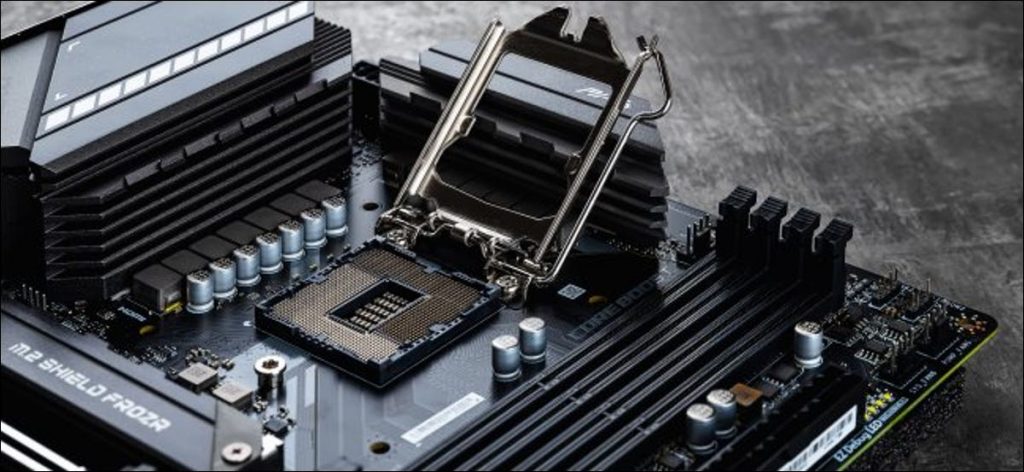

Building a new PC is an exciting experience. The custom PC market has exploded in recent years, allowing gamers to make their computers their own. However, the ability to customize and pick every component can be pretty overwhelming. In this series of articles, we will walk you through different things to consider when building a gaming computer. In today’s post, we cover things to consider when selecting a motherboard.
Fundamentals of Motherboards
Now that you have selected your CPU, the next place to go is your motherboard. Motherboards come in an extensive range of shapes, sizes, and features. The first and most important to pay attention two is what CPU the motherboard is created for.
Firstly, Intel and AMD CPUs are designed differently. Intel CPUs have pins on their bottom, compared to AMD, which don’t. Motherboards compatible with Intel’s will have slots for these pins, and AMD compatible motherboards have pins on the board. If you purchase an incompatible motherboard and CPU, you risk damaging both, which will void any warranty.
Motherboard Sizes
Motherboards come in many different sizes. Smaller motherboards might not come with as many features as bigger ones, but the small motherboard is for you if you are looking to build a physically small PC. The standard options are ATX, Micro-ATX, Mini ATX, ITX, or Mini-ITX.
Overclock Capability
Not all motherboards can overclock the CPU, so if you are serious about getting as much performance out of your processor as you can, verify your motherboard is compatible with overclocking. In addition, look at the voltage regulator module or VRM. The VRM impacts the amount of voltage supplied to the CPU. The more VRM phases a motherboard can do, the cleaner power is provided to the CPU.
Features
This is where motherboards get customizable. Different boards can have additional features or more of a particular part. For example, some motherboards come with two RAM slots, whereas others come with four spaces. Both options might have the same RAM capacity, but the number of slots will dictate the RAM sticks you need. Another example is WiFi. Most motherboards come with built-in WiFi, but not all do.
Additionally, look at the USB port options. Some motherboards come with more USB-C ports than others. The last thing you should consider is whether the board supports NVMe solid-state drives, which plugin directly to the board.
Price
As with everything in building your computer, do your research for your motherboard. Several manufacturers produce a wide range of motherboards across the prices scale. Determine what features are important and are not important to you, and then you can find the board that best fits your situation (hint: it might not be the most expensive option).
If you found this article interesting or helpful, check out our other posts!
